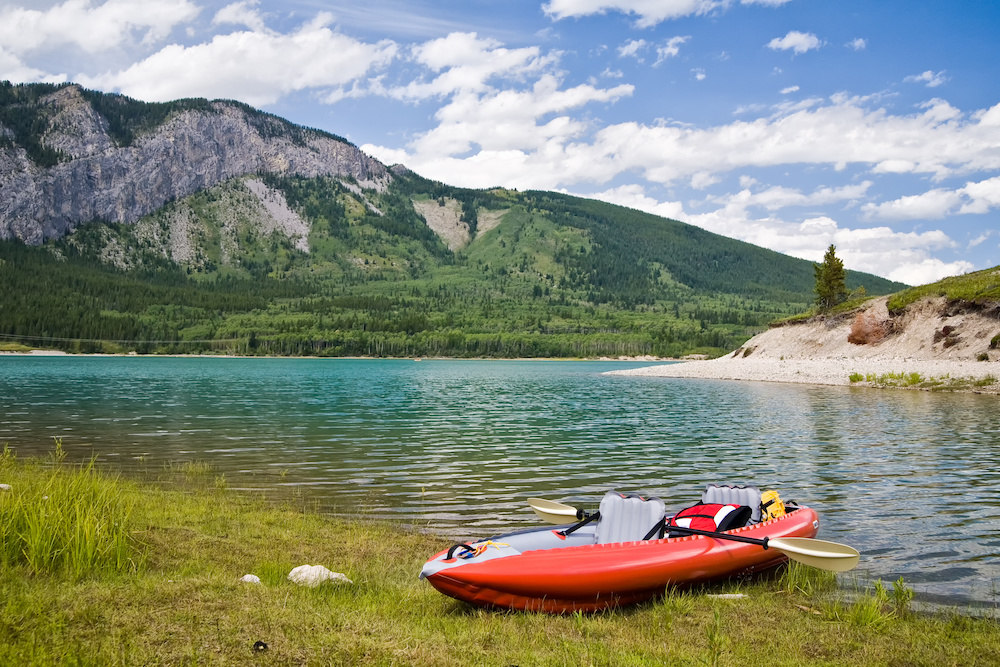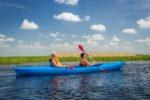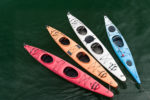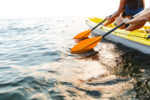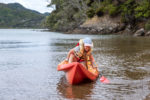Are Inflatable Kayaks Safe: Essential Things You Need To Know
We may earn a commission for purchases using our links. As an Amazon Associate, we earn from qualifying purchases.
Who doesn’t love the thought of kayaks, rivers, and ocean waves?
Almost every person gets thrilled with the picture of them happily paddling on an inflatable kayak.
However, while most people feel giddy and excited with that idea, some ask the question, “Are inflatable kayaks safe?”
You may be curious about the answer too, so we'll answer some essential questions about inflatable kayak safety.
We'll also teach you several ways to make an inflatable kayak safe for your adventures.
Are Inflatable Kayaks Safe?
Though paddle sports is a fun game, safety risks are inevitable, and there are several doubts about an inflatable kayak’s safety.
Despite being made of plastic, an inflatable kayak comes with features that make it work efficiently as regular kayaks do.
As everybody talks about the different inflatable kayak features, we are here to talk about those that involve safety.
Below are some questions that have been boggling many people’s minds.
We are here to answer them to help you get to know the inflatable kayaks more.
Are Inflatable Kayaks Durable?
Manufacturers use different materials like hypalon, PVC, and nitrylon to make inflatable kayaks.
These materials each have unique specifications that contribute to making your ride safe.
Let's learn more about them below.
- PVC
This material is a more economical choice than other types and is available in different color variants.
It is easy to use, can be welded, and used as a coating to add to nylon or polyester’s tear resistance and strength.
The problem is PVC is ineffective against sunlight, temperatures, gasoline, chemicals, and abrasions.
- Hypalon
Unlike PVC, this material can last for a long time, especially since it has resistance to fungus, mildew, and UV rays.
It is also often used as a coating for nylon, polyester, or neoprene to complement the design.
It is the same material used for the US Military and Coast Guard boats.
The downside for the hypalon is it comes at a higher price and cannot be welded for better security.
- Nitrylon
This material is the latest and is known for its durability and versatility.
It is effective against abrasion and environmental elements.
In terms of patching and durability, nitrylon outperforms PVC.
That said, this is a bit heavy, so manufacturers usually only use it in areas prone to wear and tear.
A Reminder:
Although manufacturers make inflatable kayaks with durability and versatility in mind, you need to protect your kayak intentionally regardless of the materials used.
Experts do not recommend dragging your kayaks in areas like gravel or any terrain that might puncture or tear them.
Are Inflatable Kayaks Easily Punctured?
Since inflatable kayaks are often associated with pool toys, among the biggest worries of people are punctures.
Though they are not entirely resistant to punctures, manufacturers build these kayaks with materials that act against them.
To give you an idea, kayaks can brush through tree branches and rocks without acquiring serious damage.
On the contrary, a sharp rock paired with a strong impact can tear or puncture the inflatable kayak open.
In a nutshell, inflatable kayaks do not get punctured easily, but with proper care and maintenance, when in use and stored, they can go a long way.
In case your kayak gets punctured, manufacturers usually include patch kits to help with repairs.
A pointer would be not to go overboard with repairs.
If there are too many patches that the kayak can hardly hold air, you should consider getting a replacement for your inflatable kayak.
Are Inflatable Kayaks Stable?
If you have seen inflatable kayaks failing and losing stability, then something must be wrong with them.
Manufacturers design these kayaks with inflatable sections.
Sometimes they set them up with solid rods to give support and mold the framework.
Your kayak’s rigidity depends on these features.
Also, some inflatable kayaks collapse and become unstable when incorrectly inflated.
An improperly inflated kayak can hardly stay afloat and put you in danger.
Hence, it is important to put enough air into it until you feel it become as stiff as hard-shell kayaks.
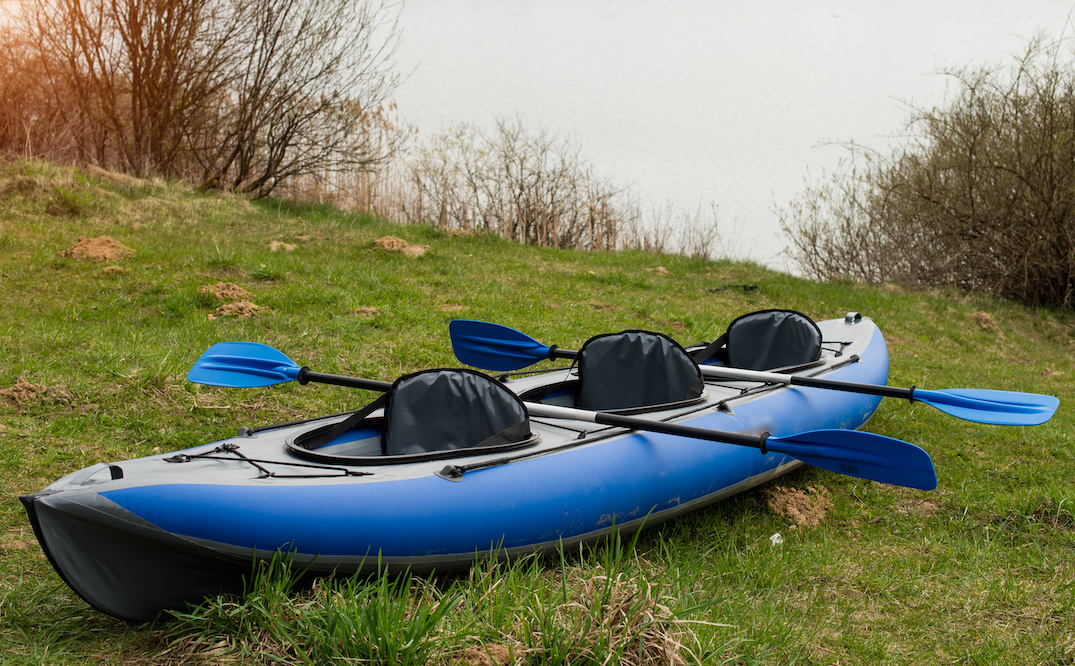
Are Inflatable Kayaks Prone To Sinking?
These inflatable kayaks have several air chambers that keep the kayak floating despite the possibilities of capsizing.
They make the inflatable kayaks as buoyant as hard-shell units.
There is no need to think and worry about sinking or capsizing when one of the chambers gets punctured or loses air.
It has three chambers specifically located on the floor and on each side of the kayak.
If one of them ends up being punctured or losing air, you can still rely on the other chambers to keep it afloat.
In terms of sinking because of water filling it up, you can depend on the kayak’s holes usually located in its seams.
Inflatable kayaks are undoubtedly self-bailing.
Is It Safe To Go Inflatable Kayaking?
In any sport or activity, safety hazards exist, and the same applies to inflatable kayaking.
If you want to make sure you keep yourself away from accidents during the activity, make sure to practice proper precautions.
Several factors can play a part in this endeavor.
That includes the option to go for quality inflatable kayaks and practices done for storage and maintenance.
You must understand the basics of kayaking using an inflatable kayak and knowing your own vessel before going for a ride.
Safety Tips for Inflatable Kayaking
Accidents can happen anytime, regardless of your skill level or kayak model.
Several factors can affect one’s venture.
The only way to have a safe ride is to practice proper precautions like the following:
- Wear Appropriate Attire
A person can use an inflatable kayak for different purposes in varying locations.
That involves diverse courses, water temperature, and more.
It is essential to wear gear suited for your venture.
People living in hot environments opt to go for swimsuits and shorts.
On the other hand, those who go kayaking in cold places use insulating clothes or layer their garments to adjust.
- Wear a Life Jacket
A good swimmer isn't exempted from this rule.
Always wear a life jacket even if it seems uncomfortable at first.
This is important, especially when you are taken out of control or set off from your kayak.
A rough course or any unexpected event that limits your ability to stay afloat can arise.
Having a life jacket on will increase the chances of saving your life.
- Pack and Equip as Necessary
Apart from dressing appropriately, you have to bring the right gear.
It can be a map, a GPS device, a first aid kit, or a few snacks and drinks.
You have to be mindful in preparing them.
This includes getting proper storage to keep them from getting compromised during the ride.
Several waterproof bags can accommodate gear, so go for one with good quality.
- Be Physically Prepared
Kayaking needs more than a vessel or any other gear at hand.
This is a pursuit that needs your full attention, functioning, and skill.
Before a kayaking schedule, make sure you stay away from substances that can affect your consciousness, functioning, or efficiency.
That includes vices such as alcohol, medications, drugs, and the like.
Since you have to be in your best condition during the ride, make sure to get enough rest and work out before you go.
If you have existing health conditions, have yourself checked and cleared by your doctor before doing the activity.
Health ailments can cause accidents, and if you encounter one, you need to be in your best health to survive.
- Check Your Kayak Before Using It
The thought of going kayaking can be exciting, but this does not give you a pass on routine checking your vessel before setting off.
A good quality inflatable kayak can sometimes fail or deteriorate over time, especially if you stored it improperly.
This can also happen with an unmaintained kayak.
To guarantee your utmost safety, make sure to thoroughly check your vessel for any tear, puncture, leak, or deterioration.
Regular maintenance will keep your inflatable kayak in shape.
- Go for a Course Suitable for Your Skills
If you want a safe ride, make sure to research your desired course.
Regardless of your skill level, look for courses that suit your ability.
Check on the temperature, water condition, and weather forecast on the day of your activity.
Gradually advance on your courses but do not rush ahead.
Taking courses beyond your ability threatens your safety.
If you do not feel confident of your skills yet or are unsure of the course you are to take, invite someone to come with you.
Always go for someone knowledgeable and capable of kayaking too.
The Takeaway
After covering the factors that affect an inflatable kayak’s performance, you can now answer the question, “Are inflatable kayaks safe?”
Any type of kayak can be unsafe to use if there is a lack of maintenance, preparation, control, and navigation.
Manufacturers design inflatable kayaks in ways that can keep their users safe.
That said, anyone who wishes to use one should know the preparation and guidelines to follow.

